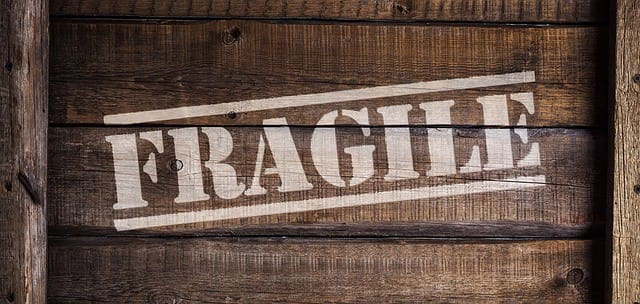Gather the Right Tools
A wise first step in the packing process is to gather all of your packing materials and tools. A simple and incredibly functional way to begin this process is to start with the first, and most essential, tool: a work station. Dedicate an area where all of your packing necessities will be kept during the process, ideally with a large work table. In addition to boxes and containers, you should also have plenty of cushioning material of various types on hand, such as packing paper, packing peanuts, and bubble wrap. You can even use your softer clothes and bedding items as cushioning. Last, keep scissors, packing tape, and regular Scotch tape at your work station at all times.
Start in Advance
Hopefully, you have the time to gather your tools and start the packing process well before your actual moving date. Make the table and space your “home base” for packing: keep your boxes, tape, and other packing supplies at your work station during the moving process. It is best to start packing your belongings that are used less frequently first, but it is also wise to pack your fragile items all at the same time. These two categories often coincide; for example, many fragile items are decorative and non-essential. You can also pack up your dishes early, substituting disposable ones for a temporary measure. The main reason that it is helpful to pack your breakable items early in the moving process is because you will feel less rushed, and therefore take the added time to ensure their safety.
Label Everything!
The danger of packing your delicate items early is that you may forget what items are in which box. Remember – you can’t overdo your labeling! Labeling and organizing are key to the safety of your items. Keeping fragile items together as much as possible will make your organization process a bit easier; on the other hand, having all of your crystal and picture frames in one box is a bit dangerous. It’s best to have a good balance of how you pack things, and you want to have plenty of cushioning (such as pillowcases) surrounding all breakable objects.
The important part of organization is labeling. Remember to label every box; for example, write “crystal dishes and pillowcases” on the outside of the box, but also write FRAGILE in large, unmistakable lettering. Writing FRAGILE on any box with breakable items is crucial to protecting them, but you must also label the rest of your boxes. Aside from the obvious benefits of labeling when it comes to unpacking, labeling is also useful to organize your truck or van in a way that avoids putting fragile objects in precarious positions under or near heavy boxes, such as those filled with books or workout equipment.
Pack Boxes and Containers Carefully and Tightly
Use your labeling to organize the boxes, containers, and large items into your moving vehicle. Group boxes by like items, ensuring that your fragile items are away from your bowling ball, or an easy-to-knock-over floor lamp. Try to put your fragile items near your clothing and bedding, and other less harmful items. In addition, pack the boxes tightly together. In this way, items are less likely to fall onto your delicate items and cause damage to them.

